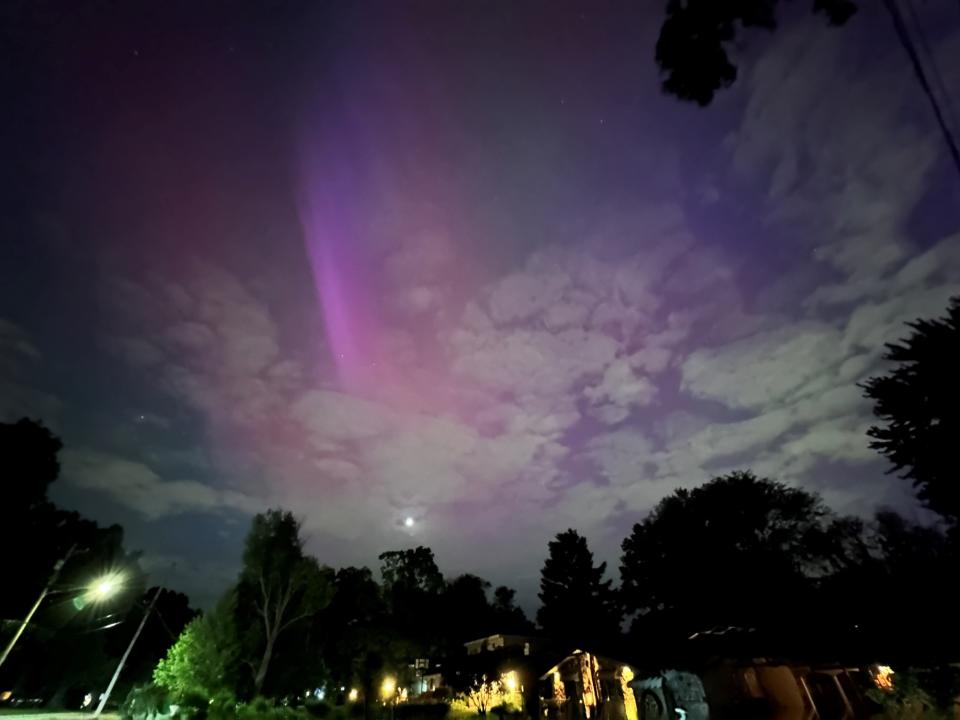Northern lights may light up U.S. skies, including Florida, in June: 5 things to know
In May 2024, all across Florida and the United States, people witnessed a rare sight in the night skies: the northern lights, or aurora borealis.
What caused the phenomenon? A very rare geomagnetic storm sent a barrage of coronal mass ejections from the sun that caused northern lights to be visible in the Sunshine State on May 10.
Space weather forecasters say there could be another dazzling display of the northern lights over parts of the U.S. on June 6.
The solar flares originated from a gigantic sunspot, a dark area on the sun over 15 times wider than Earth, according to LiveScience. The sunspot continues producing strong solar flares and the sun's rotation will have it facing Earth again on June 6 and again during a new moon.
1. Can the U. S. experience another northern lights show in June 2024?
An aurora event might be possible the week of June 6, forecasters said. It all will depend on whether or not the sun belches out a solar flare and/or coronal mass ejection toward the Earth, which would trigger the geomagnetic storms and thus the aurora.
2. Will Florida see aurora borealis June 6?
Conditions for a northern lights display across the U.S. could be favorable when a massive sunspot faces Earth on June 6 as the sun rotates on its axis.
The sunspot is still active and discharging solar flares – bursts of radiation considered our solar system's largest explosive events – and there will be a new moon on June 6, meaning no moon will be visible in the night sky.
As solar storm particles are diverted to the north and south poles, they glow in various colors depending on the atmosphere's chemical composition.
Read the full story here: Aurora borealis may light up sky again in June. Will northern lights be visible in Florida?
3. Viewing tip for seeing aurora borealis: Get out of town
Light pollution is a big problem in regard to admiring the sky at night. It is also the case for aurora viewing. Make sure to step away from the city lights to greatly improve your chances of seeing the lights.
4. The best way to capture the northern lights on your iPhone

Enable night mode: This feature automatically adjusts your iPhone's camera settings for optimal low-light conditions, resulting in clearer nighttime photos. To activate Night Mode, simply ensure it's enabled in your camera settings. For iPhone 11 and above, this feature is readily available. You can enable it manually by tapping the Night mode icon in the Camera app, which looks like a moon, in the top-left corner of the screen.
Also consider tweaking the exposure time to maximize your shot. To adjust, access the settings menu in the iPhone's camera app by tapping the top arrow. Locate the Night Mode icon and adjust the exposure time slider to the maximum. This extended exposure time should allow your iPhone to fully capture the night sky and northern lights.
5. Best resources for space weather to monitor northern lights June forecast
Here are some websites that monitor the sun's activity:
The last time northern lights were seen in Florida: May 2024
Aurora borealis in the United States in May 2024
Laura Lordi is Digital Editor at The Palm Beach Post, part of the USA TODAY Florida Network. You can reach her at llordi@pbpost.com.
This article originally appeared on Palm Beach Post: Northern lights in Florida June 6: How to see aurora borealis

